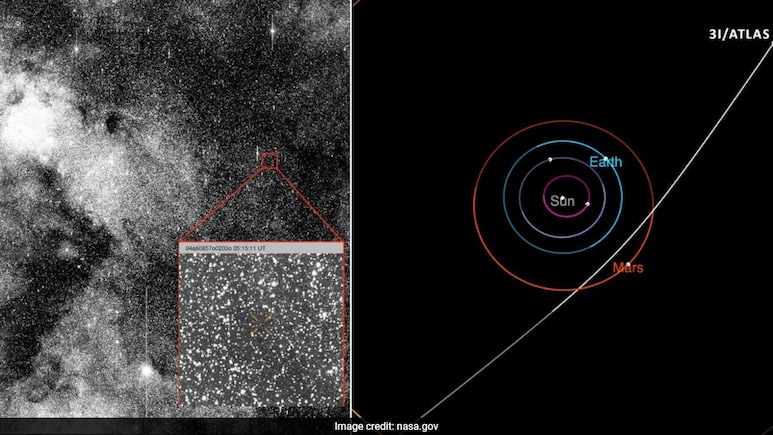
NASA announced the discovery of interstellar comet 3I/ATLAS earlier this year, on July 1. Only the third known interstellar object to pass through our solar system, 3I/ATLAS has created a lot of buzz over wild speculations that it could be an alien technology. But the US-based space agency earlier confirmed that the comet poses no threat to Earth.
Scientists have analysed the comet, which is currently making its closest approach to the Sun, to get better insights into its composition and origin. It is expected to reach its perihelion on October 29-30.
Many scientists believe that the object is naturally occurring, but some experts, including Harvard astrophysicist Avi Loeb, speculate about a non-natural origin. Here are some reasons why Harvard scientists think it could be alien technology.
Also Read | Why October 29 Is Key To Solving The Mystery Of Comet 3I/ATLAS
Chemical Composition: The comet emits a plume containing about four grams of nickel per second, without any evidence of iron. This is unusual because nickel and iron are typically found together in comets.
Nickel Tetracarbonyl: Scientists confirmed that the comet contains nickel tetracarbonyl. On Earth, this compound has been linked to industrial processes. Hence, Loeb speculates that the comet contains evidence of engineered materials.
Anti-solar tail: Initial observations showed the comet with an anti-tail pointing towards the Sun, which is quite unusual. But as per the latest findings, the anti-solar tail changed direction, now facing away from the Sun. Loeb suggests this could be indicative of controlled manoeuvring.
Also Read | Harvard Scientist Reacts To New Observations Of Comet 3I/ATLAS, Fuels Alien Speculation
Trajectory: The comet's trajectory and speed are different from those spotted earlier. It originated from outside our solar system, with a hyperbolic trajectory indicating it's not gravitationally bound to the Sun.
Surface: Loeb argues that it could be alien tech because it is unlikely to find a massive object like 3I/ATLAS in interstellar space without rocky material.
Massive size: The comet's size is huge, which is quite unusual for interstellar objects. The comet is estimated to be around 12 miles wide and is hurtling through space at an extraordinary speed of over 130,000 mph (58 km/s).
Engineered materials: According to Loeb, the comet's composition and emissions are quite similar to engineered materials, which are mostly used in industrial metal refining and coating.
What to expect next?
The comet's closest approach provides a rare opportunity to dot the i's and cross the t's. Also, to gather data that could shed light on the origins of our own solar system. Meanwhile, spacecraft like NASA's Psyche and ESA's JUICE will observe the comet from advantageous angles, potentially providing new insights.
Track Latest News Live on NDTV.com and get news updates from India and around the world

